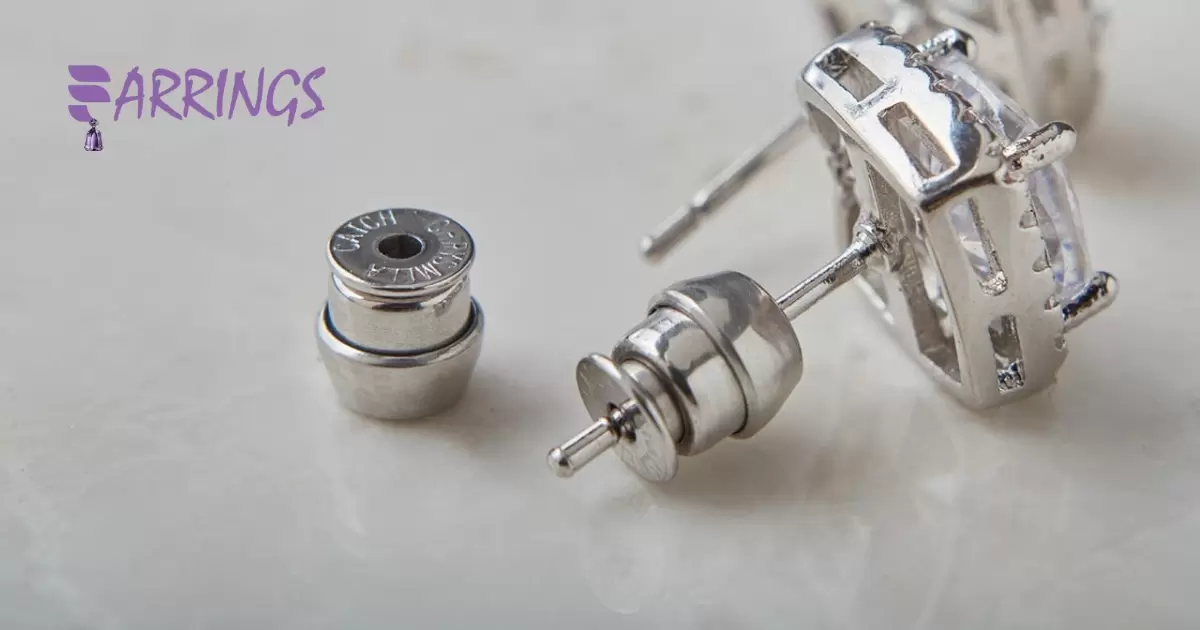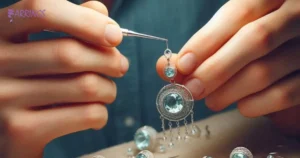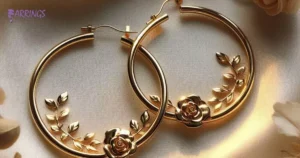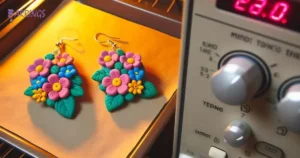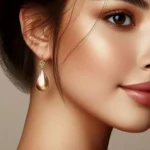Earring backs keep earrings secure, prevent loss, friction irritations and allergic reactions. They also collect earwax helping keep piercings clean. Some use earring backs decoratively for variety or to conceal stretched lobes.
What to use for earring backs? The little parts keep ornamental ear jewelry secure. Prevent loss and irritation. Collect wax, keeping piercings clean. Some use backs decoratively, mixing colors and textures. Choosing the right earring backs keeps lobes healthy.
The right backs, especially for smaller jewelry like 3mm earrings, keep ear piercings healthy and problem-free, preventing loss or swallowing of jewelry, minimizing skin irritation and allergic reactions, and avoiding earwax buildup that can clog piercings.
Key Takeaway
- Secure earrings, prevent loss
- Minimize skin irritation
- Collect earwax, avoid infection
- Allow personal decoration
- Pick comfortable, breathable backs
- Keep piercings healthy
Different Types Of Earring Backs Available In The Market
Earring backs vary, offering choices for comfort and security. The most common is the butterfly clutch; easy to use, it slides on effortlessly. Another popular type is the bullet clutch it’s sleek and snug, providing a secure fit.
Some earrings feature screw backs, requiring a twist for a tight hold. A modern touch, try the hinged hoop it clicks into place, ensuring a stylish and secure attachment. Your choice depends on personal preference and the earring style.
Pros And Cons Of Different Earring Backs
| Earring Back Type | Pros | Cons |
| Butterfly Clutch | Easy to use and widely available | Can be prone to getting lost |
| Push Back | Secure and comfortable | Can sometimes be difficult to put on |
| Screw Back | Very secure, less likely to fall out | Can take longer to put on |
| Latch Back | Provides extra security | May require a bit of practice to fasten |
| Lever Back | Stylish and comfortable | May not be suitable for all earring styles |
Earring backs come in various styles, each with its own advantages and drawbacks. The classic butterfly clutch is easy to use and widely available, but it might loosen over time, risking earring loss. Screw backs provide extra security but can be tedious to put on. They may unscrew accidentally during wear.
On the positive side, lever backs offer a secure closure and are comfortable, yet they might be bulkier and more expensive. Meanwhile, hoop earrings with latch backs are stylish and easy to wear, yet they can be prone to bending or breaking. In conclusion, choosing the right earring back involves weighing the convenience of use against the potential for loss or damage.
Earring Backs Are Best Suited For Different Types Of Earrings
Choosing the right earring backs matters. Stud earrings, go with the classic butterfly backs. They’re secure and easy to handle. Hoop earrings, on the other hand, pair well with latch backs. They’re sturdy, keeping hoops in place.
Dangle earrings benefit from fishhook backs, allowing graceful movement. Screw backs suit valuable earrings, ensuring a snug fit. Different types of earrings demand different backs. Pick wisely for a comfortable and stylish wear.
Factors To Consider When Choosing Earring Backs

When picking earring backs, think about comfort. Opt for secure backs that won’t pinch or slip easily. Consider your activity level for sports, choose tight-fitting backs; for daily wear, comfortable ones.
Pick hypoallergenic backs for sensitive ears. Surgical steel and silicone are great options. Size is crucial too. Small backs may get lost big ones can be uncomfortable. Choose a size that suits your style and keeps your earrings in place.
Common Problems With Earring Backs
Earring backs can be a headache. First off, losing them is like playing hide-and-seek with a master hider. One moment they’re there, the next – poof, vanished. Next up, the infamous droopers. Your earrings decide to take a nosedive, leaving your lobes feeling abandoned. It’s like they forgot their one job to hang on.
Lastly, the squeeze plays. Some backs grip too tight, turning a simple earring removal into a wrestling match. It’s a battle of wills: your fingers against a stubborn piece of metal. Oh, the struggle.
Tips For Maintaining Earring Backs
When it comes to keeping your earrings secure, regularly check the backs for tightness. Twist gently to ensure a snug fit without overtightening. Avoid exposing earring backs to moisture and chemicals. Remove earrings before showering or swimming to prevent damage.
Store earrings in separate compartments to prevent scratching. Periodically clean earring backs with a soft, dry cloth to maintain their effectiveness. Simple precautions like these can extend the life of your earrings and keep them comfortably in place.
How To Make Your Own Earring Backs At Home?
Grab a small piece of sturdy wire. Cut it into tiny sections. Bend each piece into a small loop. Attach these loops to your earrings. Voila! Your homemade earring backs are ready to use. Now, your earrings won’t go wandering off.
To secure the DIY earring backs, ensure the loops are tightly closed. Adjust the size to fit snugly on the earrings. Test them out; your earrings should sit comfortably on your ears without slipping. Now, enjoy your custom-made earrings worry-free.
What Are The Pros And Cons Of Different Earring Backs?
Earring backs come in various styles, each with its own advantages and drawbacks. The classic butterfly clutch is easy to use, widely available, and secure, making it a popular choice. It may loosen over time and may not be the best for heavy earrings.
On the other hand, screw backs provide a more secure fit, suitable for valuable or sentimental earrings. Yet, they can be a bit challenging to put on and take off. Meanwhile, lever backs offer a secure closure and are easy to use, but they may not be as widely available as other types.
How To Take Care Of Your Earring Backs To Ensure Longevity And Durability?

To keep your earring backs in top shape, clean them regularly. Use a mild soap and warm water solution to gently remove dirt and oils. Dry them thoroughly before putting them back on your earrings.
When not in use, store your earrings in a cool, dry place. Avoid leaving them in humid environments, as moisture can cause damage. Be mindful when putting on or taking off earrings to prevent bending or misshaping the backs.
Following these simple steps, you ensure the longevity and durability of your earring backs, keeping your favorite pairs in great condition for years to come.
Frequently Asked Questions
What Backing Is Best For Earrings?
Opt for secure options like screw-on or locking backs for earrings to prevent loss and ensure a snug fit. Avoid rubber or plastic backs as they may wear out over time.
How Do I Get My Earring Backs To Stay On?
Ensure a snug fit by selecting earring backs that match the post size. If needed, try rubber backs for added grip and security.
Which Earring Backs Are Most Secure?
Screw-on earring backs are considered the most secure, providing a tight and reliable grip to prevent accidental loss.
Conclusion
Earring backs are essential jewelry accessories. They securely fasten ornamental earrings. This prevents accidental loss or swallowed jewelry. The right backs prevent irritation and allergic skin reactions. Backs keep ear piercings clean of wax buildup as well. Some use decorative backs for customization.
Choosing the proper earring backs matters. They protect piercing health and function. Lost or irritated piercings become problems. Earwax clogs up holes without backs. The right backs keep essential passageways clear. So consider backs integral jewelry parts. Pick options suiting personal comfort and self-expression.
